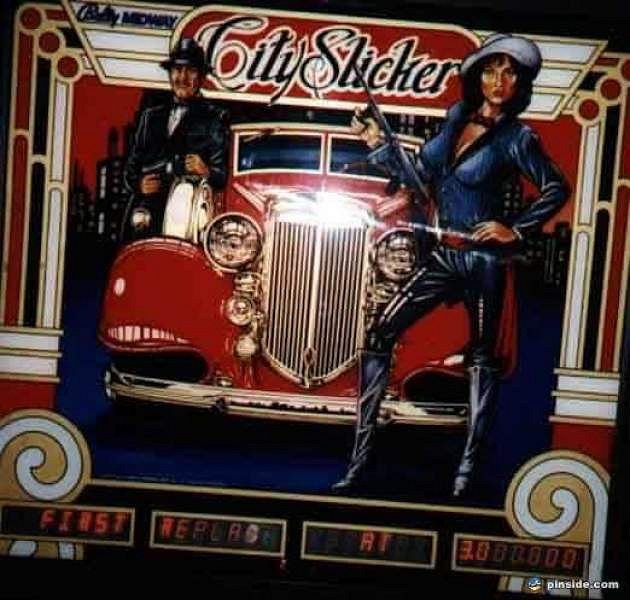


This game uses the Turbo Cheap Squeak audio board (A080-91855-E000). "City Slicker" was the original name for Bally's 1978 'The Six Million Dollar Man'. Designer Greg Kmiec explains why the name was used instead to depict his original vision of this 1987 game (pictured here) that did not go into production:Back then [1978], the designers named the whitewoods whatever they wanted to and I always liked the name "City Slicker." I got the name from a 1970's contemporary clothing store named "City Slicker" here in the Chicago area. But also remember that during the 1970's, the whitewood names were always changed by the Marketing Department once the game was released for artwork. By 1987, the industry had changed to the point that the theme was decided on first and the whitewood was designed to the theme. I still liked the name "City Slicker," so the theme became a nostalgic Roaring 20's bank robbery theme with two players shooting-it-out on the playfield at the same time. I had a new interactive pinball game concept I wanted to try out. The initial 2 sample games of "City Slicker" had a six-foot cable and trigger switched attached to the cabinet. The two standard bottom flippers on the playfield were controlled by the player in the normal fashion and the two additional flippers (upper playfield and middle playfield) were controlled by the opposing player standing next to the game by means of the attached cable. It was truly a "shoot-out" feeling. It was really interactive. The way the opposing flippers worked: 1) The opposing played controlled the top-most (left) flipper aimed downward on the upper playfield and tried to shoot the ball onto the lower playfield and past the lower standard flippers into the outhole by pulling the trigger on the attached "gun"; 2) The opposing player also controlled the flipper located next to the middle saucer and when a ball ejected horizontally out of the saucer, the opposing player tried to shoot the ball past the lower standard flippers by pulling the trigger on the attached "gun." Bally management changed the game back to the standard one-player at a time sequence for the production run. That was a big mistake. Remember, this was back in 1987. For the production run, Bally management removed the attached cable and "gun" and replaced the top left flipper with a thumper bumper (which made no sense) and had the circuit control the middle flipper to shoot the ball towards the two lower standard flippers (which made even less sense.) This was an 1987 attempt at an "interactive" pinball game.
Loading leaderboard...